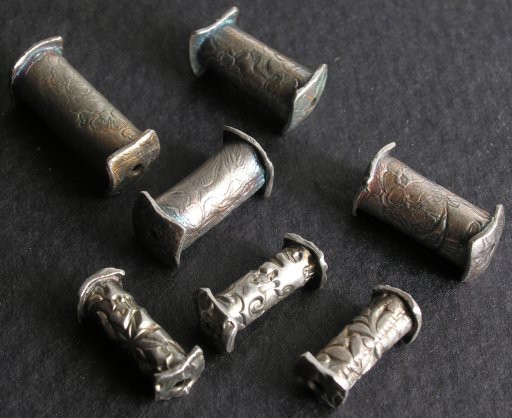PMC, I suspect, owes as much of its adoption by the fine art/fine craft community as it currently enjoys due to the promotional efforts by Tim McCreight, a widely respected metalsmith and teacher—like many people, I have his Complete Metalsmith, and, forced to choose between this book and Oppi Untracht's massive Metal Techniques for the Craftsman, I think I'd choose the former, gorgeous and complete as the latter is, simply because the McCreight book is so down to earth and approachable. (In other words, if you want to be a metalsmith, I recommend this book, which cost less than $20 when I bought it—admittedly 20 years ago—be the first tool you purchase.)
—McCreight's voice has always struck me as ultimately pragmatic, more interested in giving his students the tools they need to achieve their goals, rather than worrying whether those goals are properly lofty. As a beadstringer whose metalworking teachers had little kind to say about my chosen medium, I really appreciate this attitude.

Tubular pmc beads built on straws or wooden skewers and decorated with end caps. The smaller pieces with the deeper stamping were made first (note the stamps are the same used in the woodrose workshop); the larger pieces play with a more delicate, all-over texture. pmc, patinated, 2005.
That's not to say there isn't a lot of very ugly pmc out there—but hey, there's a lot of very ugly silver jewelry of any description out there...at any rate, here's my contribution to the genre, and I leave it to you, dear reader, to decide where on the scale it falls.
file created 16jan06
Unless otherwise noted, text, image and objects depicted therein copyright 1996--present sylvus tarn.
Sylvus Tarn